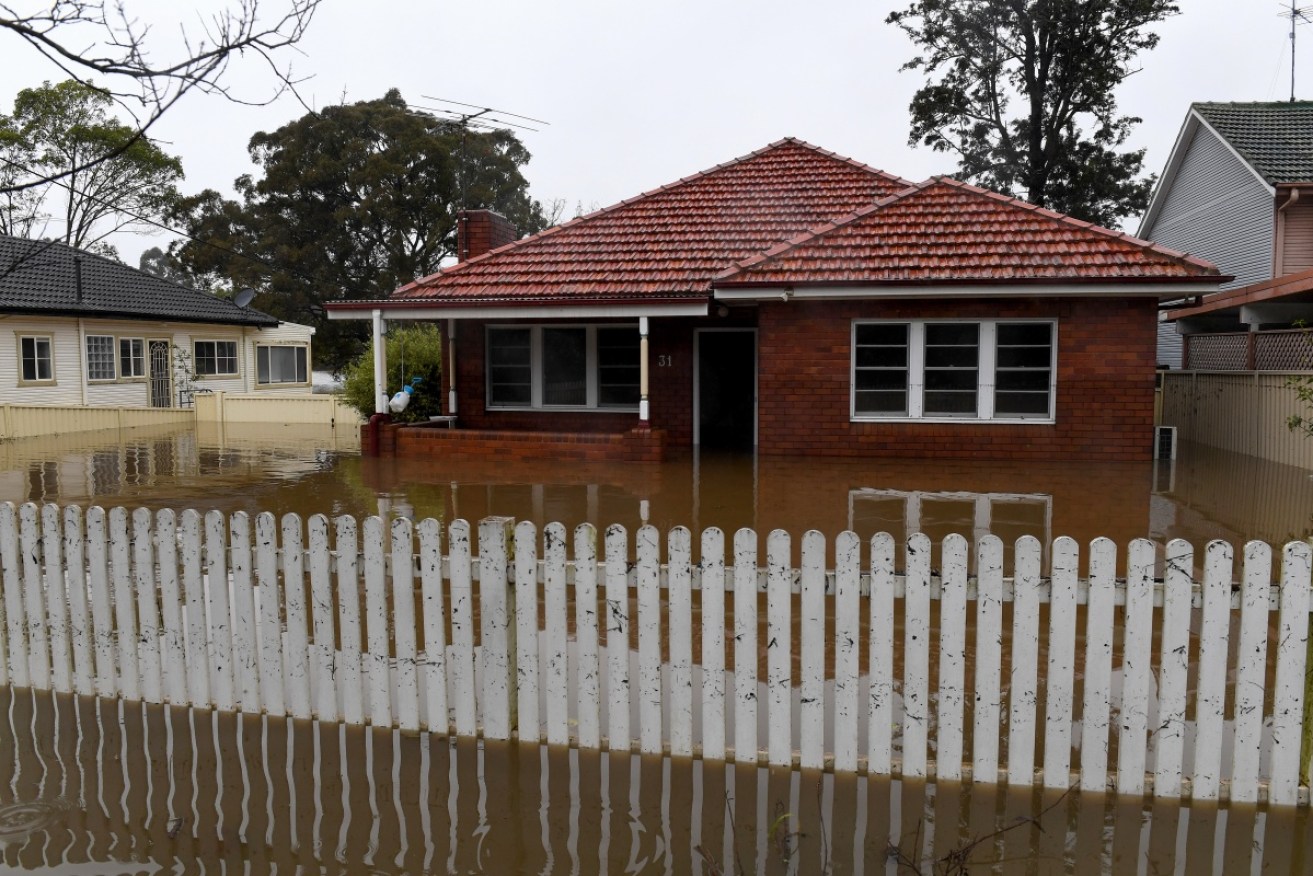Floods and higher grocery prices reveal cost of climate inaction: Economists


The costs of more frequent and severe natural disasters are mounting, and economists say we need to get used to it. Photo: AAP
The economic cost of Australia’s fourth serious flood in just 18 months is tipped to run into the millions of dollars, but economists say it’s just the tip of the iceberg.
Australians have already lodged more than $4.8 billion in flood insurance claims this year, as flood waters take a huge toll on people’s lives and continue to destroy properties in New South Wales.
The floods are also pushing up fruit and vegetable prices at a time when households are already struggling to pay for the rising cost of essentials.
Economists said the mounting insurance claims and ongoing hikes to fruit and vegetable prices are an inevitable consequence of sluggish government action on climate change.
And without a redoubling of efforts to improve disaster resilience and reduce emissions, the economic and human costs of climate change are only going to get worse over coming decades, according to Climate Council economist Nicki Hutley.
“By the end of the century, we’re talking about COVID-sized shocks to the economy every year, on average,” she told The New Daily, adding that the cost of the current floods was already well into the millions.
Tweet from @ChloeBouras
Floods spark higher grocery bills
Treasurer Jim Chalmers said on Wednesday that higher grocery bills will be an inevitable consequence of the latest floods that have resulted in disaster zones being declared across 23 local government areas in NSW.
“Some of these areas that are under water are absolutely crucial food-producing areas,” he said on ABC radio.
“We will have some shortages in some of the key fruits and veg.”
The comments come after a major supplier to Coles told The New Daily last week that the looming floods could easily disrupt supplies of everything from onions to broccoli.
Tweet from @KarmiahPea
The upcoming supply disruptions will be just the latest hit to household grocery bills, with fruit and vegetable prices rising 6.7 per cent over the year to March, according to the latest ABS inflation figures.
Fruit and vegetable prices have risen at more than twice the pace of wages in the past year, squeezing households across the country as part of a much broader cost-of-living crisis.
Climate costs mount
Economists said Australians will have to get used to higher prices for food as climate change makes natural disasters like floods, bushfires and floods more frequent.
University of Queensland professor John Quiggin said the latest floods are another reminder that climate change is already imposing a massive human and economic cost on Australia.
“The 21st century has been one of almost continuous climate disasters in Australia,” he said.
“Including severe drought, catastrophic bushfires and repeated massive floods, the economic cost of these disasters is hard to estimate, but the total is in the hundreds of billions.”
Tweet from @GavinCoote
Earlier this year, advocacy group Farmers for Climate Action published a report warning that climate-induced disruptions to grocery supply chains would become more common in coming decades.
It said consumers will be paying more for essentials like meat, bread, fruit and vegetables, and even suggested that some products could be taken off the shelves entirely.
“A lack of action will make it virtually certain that in coming decades Australians will, for the first time, face the prospect of running out of food in our major towns and cities,” the report said.
“Decisive action today will help moderate the worst impacts.”
Mitigation and emissions
Ms Hutley said some of the economic and human pain associated with climate change is inevitable, after decades of global inaction on emissions and a general lack of resilience work.
But improving mitigation and emissions efforts now could help save the nation from the worst of it.
“In the last federal budget, we had $2 billion for emissions activities, $6 billion for disaster recovery related to floods earlier this year, and $12 billion going towards fossil fuels,” she said.
“Only a couple of hundred million was set aside for adaptation and resilience measures.
“We’re spending 97 per cent of our money on recovery efforts and 3 per cent on resilience – that’s just stupid.”








